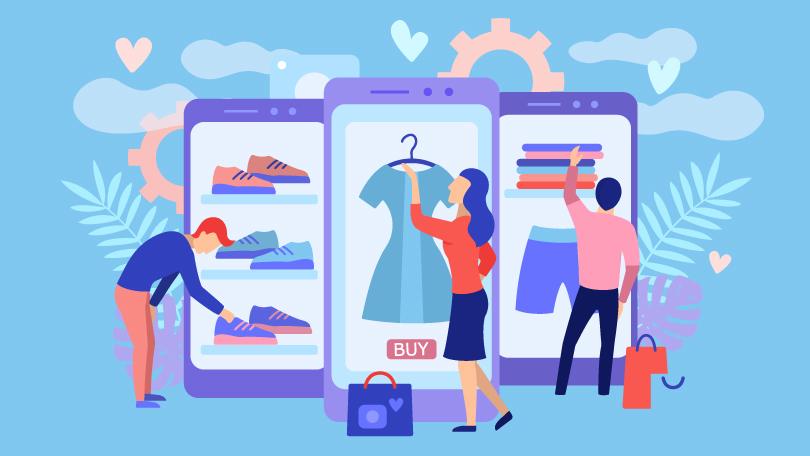
By now most people have heard of smart homes, equipped with the latest internet-enabled technology and voice-controlled gadgets. Despite our infatuation with digital solutions, however, much of the UK’s retail space operates using traditional equipment and with the bare minimum of technical investment.
With UK e-commerce sales figures breaking through the £600 billion marks in 2018, physical retail premises are hurriedly trying to catch up with their online counterparts. Just as smart devices have taken over our home lives, so too could they now move into the commercial sphere as tech consultancy IHS estimates that over 75 billion devices will be in operation by 2025.
Table of Contents
Enhancing the Shopping Experience
At a time when it seems people are moving away from physical retail, turning to tech could provide an answer. Consumers are still keen to shop in person, and if they weren’t, why would online retail giants such as Amazon be launching brick-and-mortar locations across the globe?
Ultimately, it comes down to convenience. Looking to the US, where Amazon has placed the majority of its physical footprint, online sales still only account for 11% of all retail. What shoppers want is an easy yet convenient way to spend their money on the products they need whilst also getting an experience out of the endeavour. Tired of humdrum shopping destinations that haven’t changed in years whilst failing to update their glitchy old card machines, people are hungry for the chance to spend their money at innovative and absorbing outlets that take the burden off of the customer.
This is one of the primary reasons that traditional department stores have run into trouble in the UK, whilst the likes of Amazon can open cashier-less grocers and other high-concept premises. Business as usual clearly doesn’t work – so why not try a tech-based solution to reinvigorate the shopping process.
What is the Internet of Things?
One of the most innovative and convenient technological changes making its way onto the high street comes in the form of the Internet of Things (IoT). Comprising internet-enabled everyday objects that can send and receive data, fact-finders Statista estimate that some 2.65 million IoT devices were active in EU retail setting during 2019.
Data-driven Retail
The true value of the Internet of Things to retail is that it can help bring the convenience of online shopping into a physical outlet. IoT enabled devices such as ambient sensors can help retailers to understand their customers’ preferences by collecting data and translating it into a personalized voucher or an offer unique to the specific client. By personalizing the shopping experience, business owners can inspire loyalty and encourage bigger spends from their customers, but that’s not all.
Aside from the more product-driven uses of technology, IoT devices can also be used to enhance the operational functions of shops by automating certain processes. The same sensors that inform you of your clients’ favorite products could also tell you when those items are running low – giving you the chance to stock up or even have an order placed without any need for human input. An automated supply chain is an efficient supply chain, and digital devices could help you to streamline your operations.
Improving Point of Sale Technology
Internet-enabled devices could not only make it easier to draw customers in, but also to process their payments and complete sales. From managing inventory stocks to tracking the products that customers buy, IoT technology could leave you better placed to protect your bottom line whilst modernizing your retail infrastructure.
One example is Radio-frequency identification (RFID), which allows retailers to track products at every stage from warehouse to shopping bag. Eliminating the need for barcode scanner technology, RFID could optimise the sales process and make it even more convenient for customers. RFID is also the technology behind contactless payments, so provided that you have invested in a dependable payment solution such as an Ingenico countertop card payment machine from UTP Group, your staff could be finalising the sales process simply by directing clients to tap their cards to a compact reader.
As time goes on, IoT technology could also make the contactless payment process more secure. By adding biometric authentication to the transaction, customers could look forward to paying for items simply by using their smartphones when shopping with retailers who have invested in an eCommerce Payment Gateway – another of the pioneering services offered by UTP. With online payment capabilities in a physical retail setting, it could be easier than ever before for customers and businesses to engage with one another with the option of paying online, via mobile phone, contactless card or even traditional CHIP and pin.
Closing the Gap Between Online and Physical Retail
Technology has changed the way we live, and it continues to influence the way we work. With online supermarket Ocado operating a fully automated warehouse in the south of England and London tea rooms putting robotic waiters to work, connecting retail equipment to the internet suddenly doesn’t seem so strange.
Whilst the high street faces down an economic decline, the way our retailers work could be about to evolve. All that’s certain is this – the digital revolution is coming.





More Stories
11+ Best ThePiratebay3 Sites – Ultimate Pirate bay Alternatives
7movierulz iBomma – 11 Best Alternatives to Download & Watch latest Telugu Movies
How to Spam a Phone Number (7 best apps & services) with call, texts to Get Revenge?